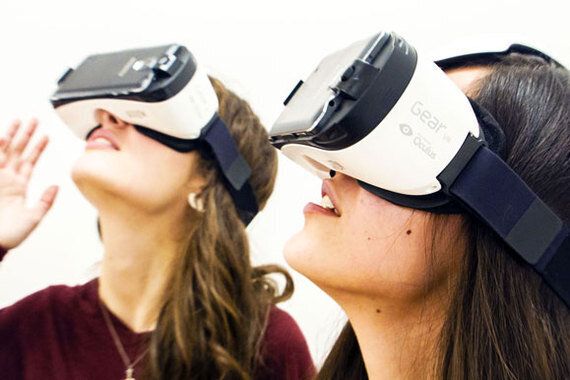
International Women's Day recently shone an even brighter light on workplace gender diversity. Virtual reality (VR) - the industry I work in - should be a shiny new opportunity for gender neutrality. But it isn't.

Image Credit: Erfan Saadati
Since the dawn of media, the sector has been plagued by gender bias. It's been going on so long that we should have learnt from our mistakes but that doesn't seem to be the case. Research recently commissioned by technology and media law firm Wiggin found men are more likely to have used, and like to use, VR. 20% of men say they've used VR, compared to 13% of women. Similarly, Google search data suggests 29-million men are interested in VR, compared to 15-million women.
Does this imply women simply aren't interested in VR? Anyone who's moved beyond the Mad Men era of rampant sexism knows that's not true. More likely, the discrepancy arises because the content currently being created is largely designed by males for males.
Just take a look at the doyennes of AR/VR, Magic Leap. When their engineers were asked to make headsets more female-friendly, their ill-informed suggestion was to design them in pink. It's an utterly depressing re-run of Bic's much-lampooned attempt to attract more female buyers by creating 'comfortable' pink pens. It's one thing for an everyday brand like Bic to make a sexist move, but Magic Leap, with its bleeding-edge kudos, really should know better.
VR's gender problem is reminiscent of gaming's early days; a time when video games were initially seen as 'shoot em up' romps for spotty teenage boys. Some commentators put this down to the mid-eighties' "dude-centric marketing computer campaigns"; a legacy that's still felt today in Silicon Valley's 70:30 gender disparity.
Once games diversified into things like The Sims and Candy Crush, gender balance levelled out. By 2014 the majority of gamers (52%) were female. Could this be the inspiration we need to nip VR's gender skew in the bud?
After speaking to a few rare female VR pioneers - Catherine Allen (independent VR creator and consultant), Mitch Turnbull (factual producer/director and BAFTA VR Advisory Associate) and Mary Matheson (freelance director) - I've started feeling more positive. These whip-smart women have shared a few insights which hopefully will help rectify VR's gender gap before it becomes irredeemably ingrained:
The nascent VR industry is often referred to as a 'community'. We're at such an embryonic stage that there's a refreshing spirit of collaboration and support. Mary Matheson points out this encourages mentorship within 'the sisterhood' to "make sure women are an integral part of shaping and building this new world." Initiatives like Women in VR are a huge help in this respect.
Meanwhile, Google (although a Silicon Valley gender gap culprit) is trying to redress the balance. The company has an unbiasing guide to help staff recognise unconscious bias. It's a positive step that the VR industry should adopt. It would certainly make industry-insiders think twice before idly offering up the dreaded 'pink solution'.
Another key area is commissioning decisions. Whether it's game experiences, marketing campaigns or 360-degree documentaries, we need to ensure female audiences are catered for as much as males. Likewise, when testing an experience through focus groups, the gender mix needs to reflect the population. This isn't just about standing up for women. It's about widening the marketplace and ultimately increasing VR adoption and sales.
Another way to ensure VR doesn't become a male echo chamber is for more female leaders to take the reins. Whether it's female entrepreneurs investing in hardware, or more women assuming creative roles, if females aren't part of the top-down hierarchy, VR is destined for a patriarchal future.
I'm not suggesting this complex issue can be solved by female leadership alone. Neither will it be remedied by publishing occasional 'great women in VR' lists and then asking those same women for a solution like it's their responsibility. In the true spirit of equality, both sexes need to be accountable.
Aiming for gender parity in a powerful new medium like VR isn't a token nod to feminism. It's far more important than that. Catherine Allen hit the nail on the head when she told me:
"With VR, humanity has a new capability - our race can now simulate another reality; transcending the limits of space and time by using a technological illusion to seemingly package and transfer experience itself. However, at the moment, it's overwhelmingly men who are benefitting from this capability."
In the same way the printing press caused seismic societal change, VR could potentially transform the way we entertain, communicate and educate. Unless the gender gap is resolved now, it could be only half the population that feels the benefit.
HuffPost UK is running a month-long project in March called All Women Everywhere, providing a platform to reflect the diverse mix of female experience and voices in Britain today
Through blogs, features and video, we'll be exploring the issues facing women specific to their age, ethnicity, social status, sexuality and gender identity. If you'd like to blog on our platform around these topics, email ukblogteam@huffingtonpost.com